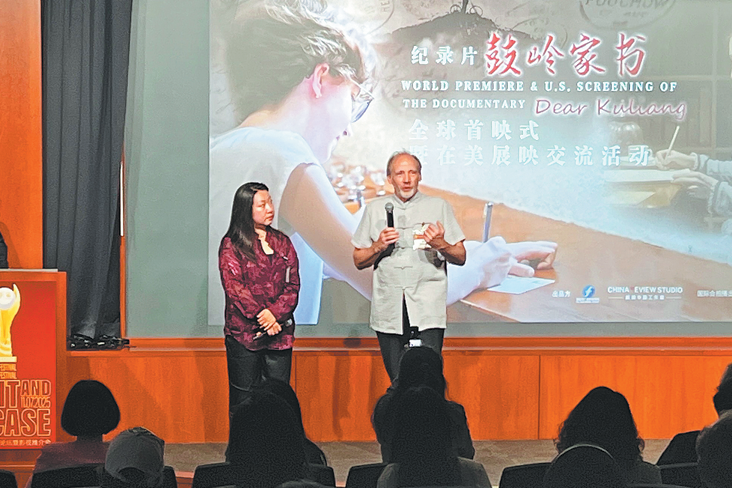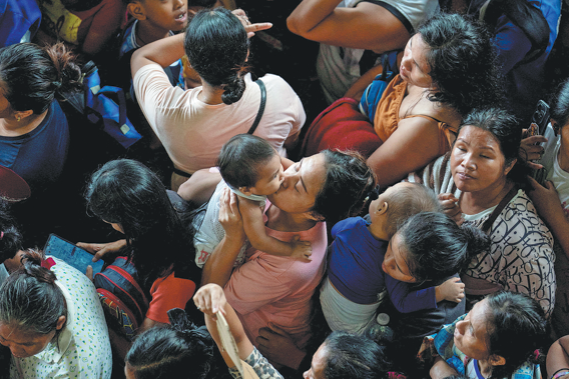Coronavirus disproportionately affecting minority communities


Across the US, data suggests that people living in areas with high poverty rates — who are often members of minority groups — are hit harder by the novel coronavirus.
The Detroit Free Press reported that African Americans, who make up 14 percent of Michigan's population, account for 40 percent of the state's COVID-19 deaths.
In New York, African Americans make up 33 percent of coronavirus hospitalizations but 18 percent of the state's population, according to the US Centers for Disease Control and Prevention.
In Houston, Texas, an analysis of data released by Harris County in late April revealed a similar pattern.
The data indicates that ZIP codes representing several of Houston's primarily African American neighborhoods have double or triple the citywide average per capita infection rate of 1 case per 1,000 residents.
The University of California, San Francisco (UCSF) recently released a study conducted with government agencies and the local Latino Task Force showing unusually higher infection results for Latinos.
In the study, a team of community workers and volunteers conducted random tests in San Francisco's Mission District in late April. Of nearly 3,000 residents examined, 2.1 percent tested positive. And about half of those showed no symptoms.
The results showed that Latinos accounted for 95 percent of the positive cases, although they made up only 44 percent of those tested.
White people accounted for 37 percent of those tested. Their infection rate was less than 1 percent.
The study also showed that among those who tested positive, 90 percent reported being unable to work from home. In contrast, among those who tested negative, 53 percent reported no impact on their work or financial stability.
"This project represents an exponential leap into the next stage of the fight against COVID-19, which is to move from diagnostic testing of people who are ill to broad community-based screening," said Dr Diane Havlir, chief of UCSF's Division of HIV, Infectious Diseases and Global Medicine and the principal investigator of the study.
"This is critical to our ability to identify where the virus is still actively spreading and to enable us to act swiftly to get control of this epidemic," she said. "We hope this can be a model for future community-screening efforts in San Francisco and beyond."
As of Wednesday, the US has seen nearly 1.39 million confirmed cases of the novel coronavirus resulting in more than 83,000 deaths, according Johns Hopkins University.
Tara Hayes, director of human welfare policy at the American Action Forum (AAF), published research Tuesday on COVID-19's impact on minority communities that shows that minorities will disproportionately feel the health and economic impact of the pandemic.
The study analyzed available data and found that black Americans, while accounting for 13 percent of the population in the US, account for 34 percent of confirmed cases, 36 percent of hospitalizations and 21 percent of deaths (where racial and ethnic data are being reported).
The study said that poor or inconsistent data for other racial and ethnic groups makes it difficult to assess the impact on other minority populations. But the study suggests that "based on what is known, it would not be surprising if other minority groups similarly experience disproportionate negative outcomes from the virus".
Hayes' research delved into why minorities are more affected by COVID-19:
They are less likely to have health insurance and more likely to have underlying health conditions, putting them at greater risk for negative outcomes if they contract the virus.
They are more likely to be employed in low-wage jobs at risk of loss as a result of the economic downturn, while low-wage workers in essential jobs are more likely to work in environments that require close contact with others, increasing their risk of exposure to the virus.
They are more likely to live in dense urban areas and to have more people living within a household, making it more challenging to isolate sick and at-risk family members.
"The pandemic is not creating these disparities, but rather highlighting and worsening existing disparities," Hayes concluded.
































